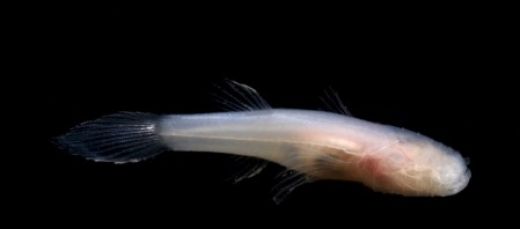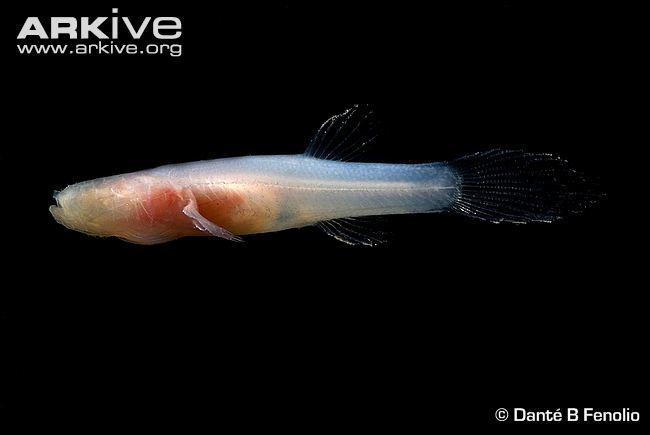
Amblyopsis rosae
FAMILY
Amblyopsidae
TAXONOMY
Typhlichthys rosae Eigenmann, 1897, “caves of Missouri.”
OTHER COMMON NAMES
None known.
PHYSICAL CHARACTERISTICS
Grows to 2.56 in (6.5 cm). Pinkish-white in coloration. The
eyes are not externally visible because they have only vestigial
tissue under the skin. This fish also lacks pelvic fins.
DISTRIBUTION
This species can be found at 41 sites on the Springfield
Plateau, over seven counties in three states: southwest Missouri
(20 sites), northwest Arkansas (10 sites), and northeast Oklahoma
(11 sites). (The verified historic range was larger.)
HABITAT
Individuals of this species are found mostly in small cave
streams with a chert or rubble bottom, in pools over a silt and
sand bottom, or in karst windows or wells, but never too deep.
BEHAVIOR
Almost nothing is known about their
BEHAVIOR
.
FEEDING ECOLOGY AND DIET
Stomach contents have been found to contain copepods, which
constituted about 70–90% of the contents by volume; the balance
was primarily small salamanders, crayfish, isopods, amphipods,
and young of their own species. Most individuals
grow between April and October. Cannibalism does not always
occur in this species.
REPRODUCTIVE BIOLOGY
Breeding habits are not well understood. They have an extended
spawning season, with a peak in late summer. The maximum
life span is four to five years. Growth is sporadic.
CONSERVATION STATUS
Classified as Vulnerable by the IUCN and as Threatened by
the U.S. Fish and Wildlife Service.
SIGNIFICANCE TO HUMANS
Of particular scientific interest because it is a cave species.
Photo Gallery of - Ozark cavefish





 Animalia Life
Animalia Life